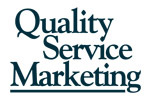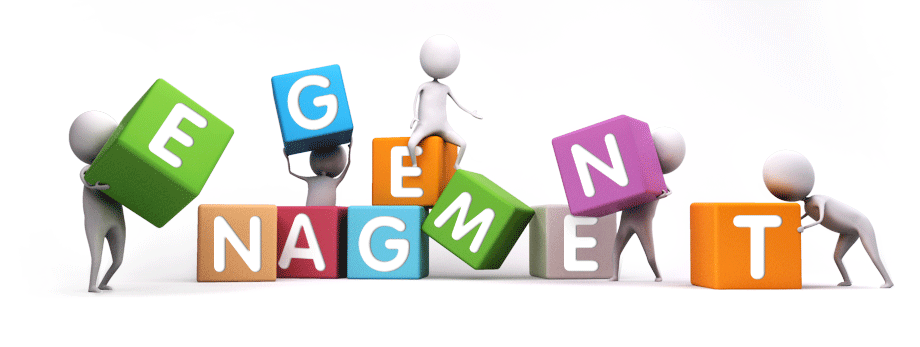[Note: I’m pleased to share this timely post from Matthew Fenton, a Chicago-based marketing professional and founder of Three Deuce Branding that specializes in brand clarity. Here he offers a fundamental strategy to uncover the brand values a business needs to survive and thrive in these challenging times. More on Matthew’s work can be found at the end of this post.]
There’s a question that’s asked far too rarely as we develop brand and business strategies. It’s simple but extremely powerful, since it shapes everything that you’ll do as a team or organization.
The question: Who do we want to be?
It’s challenging to lead an organization in the best of times. In a time of scarcity – like the one we recently, abruptly entered – it can feel impossible.
But navigating difficulty is one of the roles of a leader. As FDR said, “A smooth sea never made a skilled sailor.”

I’ve been working with my clients to answer questions like “How can we serve our consumers in new ways?” and “What trade-offs must we make to get through this?” You’ve no doubt asked and answered similar questions. At some level, these are questions about what we value.
Think for a moment about the choices recently made by your teams, your leadership and your organization. Which choices are you most proud of? What values do these choices reflect? Take a moment – right now – to make note of these. We’re going to come back to this.
Our values are being tested, which is to say this is an opportunity for personal and organizational growth. So don’t waste this crisis. It brings the opportunity to rethink, reorder and solidify what we value – and who we want to be.
Brands Are Already Showing Us Who They Are
For years, brands have fallen all over themselves trying to convince us that they’re values-based and purpose-driven. Now we get to find out who was serious.
Some brands are failing miserably. For example, a brand I’d never heard of, Parlour H, took the opportunity to start spamming me with hair-care tips for the quarantine. Timely, yes, but also wholly unrequested. Parlour H, is this really who you want to be?
To be fair, there have also been plenty of examples to the good. Companies have repurposed manufacturing facilities to make respirators, ventilators, hand sanitizer and masks, or are donating goods and services within their communities. Major brands have earned the most PR, but I encourage you to look for examples of local businesses who are doing the right things. You won’t have to look too hard.
These businesses should be applauded today and remembered when this is all over. By taking positive action, they’ve shown us who they are (and who they want to be).
“Brand” Values Are Actually Personal
When I ask, “Who do we want to be?” I’m deliberately using the first-person plural. I’m talking about people, not brands.
Brands are sometimes seen as these detached entities that sit between a company and its consumers. But companies that rely heavily on front-line personnel – such as restaurants, retail and service providers – know that their people are the brand. (One potential positive outcome of this crisis is that front-line staff will be viewed not as cost centers, but as value creators.)
There’s been a lot of talk about brand purpose and values in recent years. And, yes, you may associate a certain brand with certain values. But let’s be clear – brands don’t choose their own values. How could they? Brands aren’t sentient beings.

As Jim Stengel has said, “A brand is simply the collective intent of the people behind it.” As brand leaders, we decide which values our brands will exemplify. This means choosing some things and not choosing others. Whenever a brand makes a move, remember that there’s a team of people that made it happen.
Also note that I’m asking, “Who do we want to be?” and not “How do we want to be perceived?” That’s because the latter question allows for the possibility of faking it. nd you can only fake it for so long before the jig’s up.
This is one of the areas where old-school thinking on branding – that brands are “costumes” that are easily changed, or “shields” that hide our true inner workings from the world – falls tragically short in practice. In branding, as with people, we reveal who we are by what we do, not by what we say.

Where Values Fit Within Strategy
My positioning and strategy workshops always include at least one module rooted in values. During these modules, there’s a noticeable shift in the energy in the room. People aren’t thinking about tasks to execute or positions to claim; they’re thinking about what they could be and do, as a team, pulling together.
Asking questions like “Where will we play?” and “How will we win?” are absolutely necessary to crafting a successful strategy. But if these aren’t guided by a clear sense of who you want to be, the answers may lack cohesion and grounding.
In short: Your values should outlast any strategic or tactical decisions. So ignoring your values while crafting strategy makes zero sense.
This is to say that your values are a necessary part of the diagnosis that precedes any smart strategy. You’re establishing a core aspect of your worldview: “This is who we are and what we stand for. This is what we won’t sell for any price.”

Getting (Back) to Your Values
So as you consider how you’ll lead your way out of this crisis, start with the values you and your team truly live and embody. Ask questions like:
- In our response to COVID-19, what decisions did we make that we’re particularly proud of? What do those decisions say about our values? (Refer to the notes I asked you to make at the top of this piece.)
- In our company’s history, what are some stories that we’re particularly proud of? Think about both “diving catches” and “everyday wins.” What values do these stories exemplify?
- What core values do you personally bring to work?
- What core values would you want your children to exemplify when they begin their careers?
- If we were to start another business tomorrow, in a completely different line of work, what values would we take with us? (I borrowed this question wholesale from Jim Collins.)
- What values (as opposed to traits) would you like to demonstrate to customers, clients, partners and each other?
You can answer these questions individually or in small groups. Then share the outputs, with an eye toward both sensible clusters and intriguing outliers. The end goal should be to align on a small set of core values. In practice, this means about three values, and never more than five.
If, like many companies, you already have a Values Statement, this crisis presents an opportunity to revisit it. Which values did you really stand on during this time? Which might be improved or replaced?
When you’ve answered the question of “Who do we want to be?” you’ll have a powerful set of boundaries for the rest of the strategic process. You’ll instantly discard some avenues, since they don’t get you closer to who you want to be. (In some cases, you’ll find yourself saying, “That’s a great idea, but not for us.”) Other avenues will elevate in priority immediately.
Most importantly, you’ll set down markers for how you behave within your walls – which will greatly shape how you’re perceived beyond those walls.
When we respond to major challenges, we often reveal who we truly are. But we can also transcend old limits and grow new strengths. During this crisis, I’ve been inspired by numerous examples of generosity, creativity and resilience. I’m sure you have too.
So, again: Don’t waste this crisis. Make decisions that Future You will be proud of. Identify the values that drove those decisions. And ensure that those values live within your organization for years to come.
Please reach out with questions about (re)defining your values or resetting your strategy. I’m happy to help.
About Matthew Fenton: Matthew is a former CMO who helps brands to focus, grow and win. Since founding his consultancy, Three Deuce Branding, in 1997, he’s helped hundreds of brands to achieve “brand clarity.” His consulting services and speaking engagements help brands to focus on what matters through positioning, strategy and ideation. Contact Matthew here. He’s based in Chicago.
Copyright 2020 – Matthew Fenton. All Rights Reserved.





 So which customers come first?
So which customers come first?

